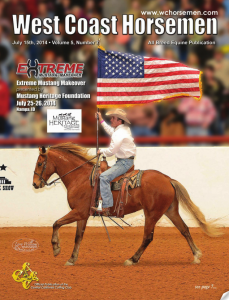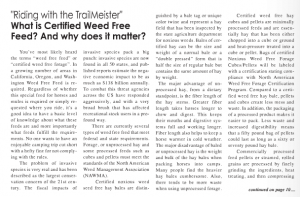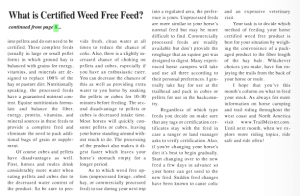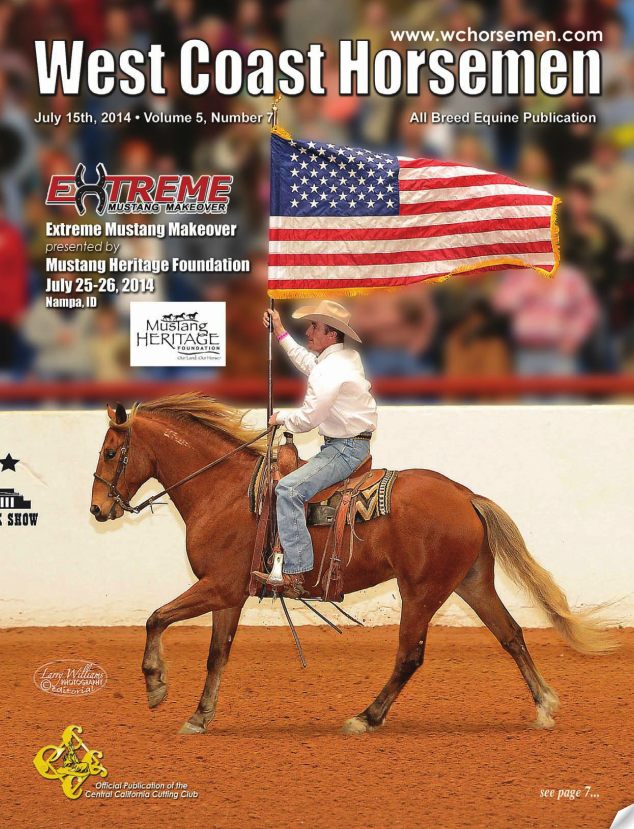 As published in the July 2014 edition of West Coast Horsemen
As published in the July 2014 edition of West Coast Horsemen
You’ve most likely heard the terms “weed free feed” or “certified weed free forage”. In a growing number of areas in California, Oregon, and Washington Weed Free Feed is required. Regardless of whether this special feed for horses and mules is required or simply requested where you ride, it’s a good idea to have a basic level of knowledge about what these feeds are and more importantly what feeds fulfill the requirements. No one wants to have an enjoyable camping trip cut short with a hefty fine for not complying with the rules.
The problem of invasive species is very real and has been described as the largest conservation concern of the 21st century. The fiscal impacts of invasive species pack a big punch: invasive species are now found in all 50 states, and published reports estimate the negative economic impact to be as much as $138 billion annually. To combat this threat agencies across the US have responded aggressively, and with a very broad brush that has affected recreational stock users in a profound way.
There are currently several types of weed free feed that meet federal and state requirements. Forage, or unprocessed hay and some processed feeds such as cubes and pellets must meet the standards of the North American Weed Management Association (NAWMA).
Certified noxious weed seed free hay bales are distinguished by a bale tag or unique color twine and represent a hay field that has been inspected by the state agriculture department for noxious weeds. Bales of certified hay can be the size and weight of a normal bale or a “double pressed” form that is half the size of regular bale but contains the same amount of hay by weight.
The major advantage of unprocessed hay, from a dietary standpoint, is the fiber length of the hay stems. Greater fiber length takes horses longer to chew and digest. This keeps their mouths and digestive systems full and working longer. Fiber length also helps to keep a horse warmer in cold weather. The major disadvantage of baled or unprocessed hay is the weight and bulk of the hay bales when packing horses  into camps. Many people find the heavier hay bales cumbersome. Also, there tends to be more waste when using unprocessed forage.
into camps. Many people find the heavier hay bales cumbersome. Also, there tends to be more waste when using unprocessed forage.
Certified weed free hay cubes and pellets are minimally processed feeds and are essentially hay that has been either chopped into a cube or ground and heat-pressure treated into a cube or pellet. Bags of certified Noxious Weed Free Forage Cubes/Pellets will be labeled with a certification stating compliance with North American Weed Free Forage Certification Program. Compared to a certified weed free hay bale, pellets and cubes create less mess and waste. In addition, the packaging of a processed product makes it easier to pack. Less waste and increased digestibility means that a fifty pound bag of pellets could last as long as a sixty or seventy pound hay bale.
Commercially processed feed pellets or steamed, rolled grains are processed by finely grinding the ingredients, heat treating, and then compressing into pellets and do not need to be certified. These complete feeds (usually in large or small pellet form) in which ground hay is balanced with grains fo
r energy, vitamins, and minerals are designed to replace 100% of the hay or pasture diet. Nutritionally speaking, the processed feeds have a guaranteed nutrient content. Equine nutritionists formulate and balance the fiber, energy, protein, vitamins, and mineral sources in these feeds to provide a complete feed and eliminate the need to pack additional bags of grain or supplement.
Of course cubes and pellets have disadvantages as well. First, horses and mules drink considerably more water when eating pellets and cubes due to the decreased water content of the product. So be sure to provide fresh, clean water at all times to reduce the chance of colic. Also, there is a slightly increased chance of choking on pellets and cubes, especially if you have an enthusiastic eater. You can decrease the chances of this as well as providing extra water to you horse by soaking the pellets or cubes for 10-30 minutes before feeding. The second disadvantage to pellets or cubes is decreased intake time. Most horses will quickly consume pellets or cubes, leaving your horse standing around without much to do. The processing of the product also makes it digest faster which leaves your horse’s stomach empty for a longer period.
As to which weed free option (unprocessed forage, cubed hay, or commercially processed feed) to use during your next trip into a regulated area, the preference is yours. Unprocessed feeds are more similar to your horse’s normal feed but may be more difficult to find. Commercially processed feeds are readily available but don’t provide the roughage that an equine gut was designed to digest. Many experienced horse campers will take and use all three according to their personal preferences. I generally take hay for use at the trailhead and pack in cubes or pellets for use in the backcountry.
Regardless of which type feeds you decide on make sure that any tags or certification certificates stay with the feed in case a ranger or land manager asks to verify certification. Also, if you’re changing your horse’s diet it’s best to begin gradually. Start changing over to the new feed a few days in advance so your horse can get used to the new feed. Sudden feed changes have been known to cause colic and an expensive veterinar y visit.
y visit.
Your task is to decide which method of feeding your horse certified weed free product is best for your situation by weighing the convenience of a packaged product to the fiber length of the hay bale. Whichever choices you make, have fun enjoying the trails from the back of your horse or mule.
I hope that you’ve this month’s column on what to feed your stock. As always for more information on horse camping and trail riding throughout the west coast and North America visit www.TrailMeister.com. Until next month, when we explore more riding topics, ride safe and ride often!


